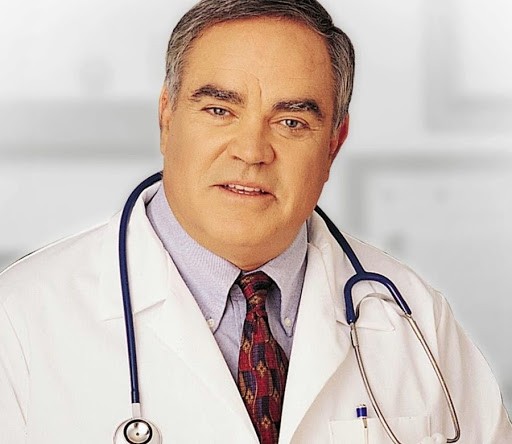
Recently Diagnosed or Relapsed? Stop Looking For a Miracle Cure, and Use Evidence-Based Therapies To Enhance Your Treatment and Prolong Your Remission
Multiple Myeloma an incurable disease, but I have spent the last 25 years in remission using a blend of conventional oncology and evidence-based nutrition, supplementation, and lifestyle therapies from peer-reviewed studies that your oncologist probably hasn't told you about.
Click the orange button to the right to learn more about what you can start doing today.
- You are here:
- Home »
- Blog »
- Multiple Myeloma »
- Multiple Myeloma Diagnosis- “How Long Have I Got?”
Multiple Myeloma Diagnosis- “How Long Have I Got?”

“So how long have I got?”…“My oncologist told me that the five-year survival rate for my cancer is 45 percent. What does this actually mean for me?”…
“How long have I got? We all ask this question. Problem is, it can’t be answered.
A cancer survival or the commonly used metric of “five year survival rate” can be a double-edged sword . Every newly diagnosed cancer patient wants to know the these averages/statistics for his/her cancer- whether a rare cancer such as multiple myeloma or a more common cancer such as breast, prostate or colon cancer.
But here’s a dirty little secret. Five-year survival rates probably don’t apply to you.
For the record, the first thing I asked my oncologist was for my cancer’s survival rate. I was young, (34) single and otherwise very healthy. According to conventional oncology, my cancer, multiple myeloma, is incurable.
At the time I was diagnosed, MM had a five-year survival rate of 49% according to the American Cancer Society. My oncologist told me that I had 3-5 years to live. After conventional therapies from ’94-’97 my oncologist told me that “there is nothing more we can do for you.”
My point is that newly diagnosed cancer patients may want to know the averages. This is the first thing that we all ask. People must keep in mind that many variables can change those averages.
I think the Washington Post article linked and excerpted below explains the shortcomings of survival statistics well. I excerpted the four most important reasons why your five-year survival statisic might not apply to you.
- “Patients are likely to get the highest-quality treatment at a designated comprehensive cancer center, and higher quality translates into longer survival.”
- “Historical survival rates are also group trends that don’t account for patient individuality. Many other variables — such as age, overall health and how well an individual cancer responds to treatment — will affect a person’s chances of survival.”
- “But here’s the crapshoot: A patient’s survival odds may be better or worse when individual criteria and characteristics are considered…”
- “Troester also pointed out that “at the five-year mark, that whole prediction process starts anew.” By that she means that the longer you live, the longer you are likely to live.”
What does the above mean to you if you’ve been diagnosed with MM?!?
- The five year average as of 2022 is a little over 50% with a 5-7 year average survival.
- NDMM patients who work with a MM specialist rather than a general oncologist or even a hematologist-oncologist, live, on average, longer according to research.
- Keep in mind however, that these two statistics very a great deal depending on your age, stage at diagnosis, therapy plan (conventional and/or non-conventional), etc.
Have you been diagnosed with Multiple Myeloma? What stage? I am a long-term survivor of an incurable cancer. Scroll down the page, post a question or comment and I will reply to you ASAP.
To Learn More About Diagnostic Criteria for Multiple Myeloma Click Now
thank you,
David Emerson
- MM Survivor
- MM Cancer Coach
- Director PeopleBeatingCancer
Recommended Reading:
- C-B-D Becomes F.D.A. Approved AKA Mainstream?
- New Guideline for Surveillance of Gynecologic Cancers
- Anna Warner’s Thyroid Cancer Survivor Story
You’ve been given a terrible diagnosis. Here’s how to assess your survival odds.
““So how long do I have to live?”
A reader with cancer recently sent me a letter with this question, which on its face seems simple enough: “My oncologist told me that the five-year survival rate for my cancer is 45 percent. What does this actually mean for me?”…
There’s much to be unpacked when confronted with survival odds — including statistics, the medical treatments available, disease progression and existential queries about life. Tackling them requires a combination of math and science, and the answers are not completely satisfying, in part because statistics won’t tell an individual patient what really lies ahead.
…For instance, a 45 percent five-year survival rate, said Donald Berry, a biostatistician at MD Anderson Cancer Center in Houston, means that out of 100 patients historically diagnosed with a cancer “apparently the same” as the letter writer’s, 45 would be expected to be alive after five years.
It’s a generalized prognosis, though, which Berry says may not take into account tumor type, personal genomics, health history, diet, level of physical activity and much more. In other words, it’s a big bucket that an individual may or may not fit into. As Berry put it, “Time of survival cannot be predicted perfectly.”
Troester also raised one last important point: Patients are likely to get the highest-quality treatment at a designated comprehensive cancer center, and higher quality translates into longer survival. A 2015 study by Memorial Sloan Kettering researchers found “large survival differences” between patients treated for cancer at specialized cancer centers vs. those treated at community hospitals. To boost your odds with a cancer diagnosis (especially a rare or complicated cancer), it’s worth trying to get to a comprehensive cancer center — or at least to a hospital that does a high volume of cancer cases, especially of the sort of cancer that you have.
In the end, here’s what I know: Some of us want to predict the future. Others prefer to stay in the here-and-now. Some of us will be statistical outliers. Others will die of another cause. I’m reminded of Stephen Jay Gould, the noted evolutionary biologist, who was diagnosed with abdominal mesothelioma in 1982. As he famously wrote: The disease was “incurable, with a median mortality of only eight months after discovery.” Gould lived another two decades, dying of an unrelated cancer.
In other words: Plan for the worst. Hope for the best. Don’t expect stats to predict your future. And most important, live your life to the max.
Which leads us to the science. Doctors can be “very bad at prognosis, at guessing how long people will live,” explained Andrew Vickers, a biostatistician at Memorial Sloan Kettering Cancer Center in New York, whose work centers on assessing the clinical value of predictive tools. “That’s because they rely on their clinical experience instead of the data.”…
Historical survival rates are also group trends that don’t account for patient individuality. Many other variables — such as age, overall health and how well an individual cancer responds to treatment — will affect a person’s chances of survival…
The online tools cover more than a dozen cancers. Take colorectal cancer, for which seven data points predict survival following surgery. Among them: gender, age, staging and the number of positive (cancerous) lymph nodes. The result is pure math: Given your input, there is an “X” percent chance you’ll be alive in five years.
But here’s the crapshoot: A patient’s survival odds may be better or worse when individual criteria and characteristics are considered…
With that I went back to Troester, who is a critic of the Memorial Sloan Kettering model’s reliance on clinical data. What about someone’s body mass index, diet, overall health and physical activity? These are “all things that interact together to determine someone’s prognosis,” she said…
Troester also pointed out that “at the five-year mark, that whole prediction process starts anew.” By that she means that the longer you live, the longer you are likely to live…”


